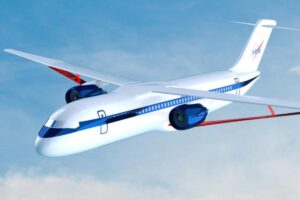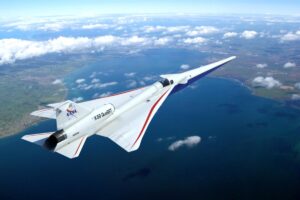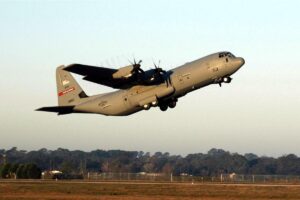Understanding MIL-STD-704 for Avionics Power Systems
Introduction
In the aerospace and defense sectors, where safety, precision, and reliability are paramount, power quality is not merely a preference—it is a necessity. Avionics systems depend on consistent, clean, and predictable electrical power to function accurately. To meet these stringent requirements, the U.S. Department of Defense established a set of guidelines—known as MIL-STD-704—that governs the electrical characteristics of aircraft power systems. This standard ensures that aircraft electrical systems are compatible with and can safely power all onboard avionics and subsystems. This white paper provides a comprehensive exploration of MIL-STD-704, detailing its structure, application, and the critical role it plays in guaranteeing reliable aircraft power delivery.
1. Overview of Aircraft Electrical Power Systems
1.1 The Role of Electrical Power in Avionics
Aircraft rely heavily on electrical systems to support everything from communication and navigation to flight control and monitoring. Modern aircraft are particularly power-intensive, with an increasing number of electric actuators, sensors, and avionics requiring stable and continuous power.
1.2 Common Power Configurations
Aircraft typically use AC (alternating current) and DC (direct current) power systems. These systems operate at standardized voltage levels to support interoperability across manufacturers and equipment. For example, 115/200 V AC at 400 Hz and 28 V DC are common configurations in military and commercial aircraft.
1.3 Importance of Standardization
Without standardization, interoperability between power systems and equipment would be extremely challenging, resulting in increased costs and reliability issues. MIL-STD-704 ensures uniformity in voltage, frequency, ripple, and transient tolerances, thereby simplifying design and certification.
2. What is MIL-STD-704?
2.1 History and Development
MIL-STD-704 was first published in 1959 to address the growing complexity of airborne electrical systems. It has undergone several revisions, with MIL-STD-704F being the latest. Each version incorporates updates to reflect advances in aerospace technology and changing operational requirements.
2.2 Objectives of the Standard
The main goal of MIL-STD-704 is to define the interface between the aircraft electric power supply and airborne utilization equipment. The standard provides the performance requirements for power characteristics such as voltage, frequency, phase, waveform, and transient behavior.
2.3 Scope and Applicability
MIL-STD-704 applies to both AC and DC systems. It addresses power supplied under normal, abnormal, and emergency operating conditions, thereby covering a comprehensive range of real-world scenarios.
3. Power Types Defined by MIL-STD-704
3.1 AC Power Categories
The standard defines multiple categories of AC power, including:
- 115/200 V, 3-phase, 400 Hz
- 115/200 V, 3-phase, variable frequency (360–800 Hz)
- 26 V, 1-phase, 400 Hz These categories are common in both military and commercial aircraft.
3.2 DC Power Categories
MIL-STD-704 also specifies several DC configurations:
- 28 VDC
- 270 VDC
- 14 VDC (less common in modern aircraft) Each configuration comes with its own set of steady-state, transient, and emergency condition requirements.
3.3 Voltage and Frequency Tolerances
The standard outlines specific tolerances for voltage (e.g., ±10%) and frequency (e.g., ±5%) under various operational scenarios to ensure that equipment can handle real-world deviations without failure.
4. Operational Conditions Covered by MIL-STD-704
4.1 Normal Conditions
Defines the parameters for nominal voltage and frequency under stable operating conditions, ensuring that avionics and other equipment function correctly.
4.2 Abnormal Conditions
Addresses scenarios such as under-voltage, over-voltage, under-frequency, over-frequency, and phase unbalance. These conditions can occur due to generator malfunctions or sudden load changes.
4.3 Emergency Conditions
Specifies power requirements during emergency operations, such as backup generator engagement or battery-only operation, to ensure mission-critical systems remain operational.
4.4 Transient Conditions
Includes requirements for handling power transients caused by switching operations or lightning strikes, which could otherwise damage sensitive avionics.
5. Testing and Verification
5.1 Importance of Compliance Testing
Avionics and power equipment must undergo rigorous testing to ensure they conform to MIL-STD-704. Compliance testing validates that systems can operate under all defined power conditions.
5.2 Test Equipment and Simulation
Test setups often include programmable AC/DC power sources, transient generators, and waveform analyzers. These tools simulate MIL-STD-704 power profiles to test the resilience of the equipment.
5.3 Certification and Documentation
Test results must be documented thoroughly and may be submitted to certification authorities such as the FAA or DoD. This documentation is essential for product approval and system integration.
6. Design Considerations for MIL-STD-704 Compliance
6.1 Power Supply Design
Designers must ensure that internal power supplies can tolerate the full range of specified conditions. This includes input filtering, surge protection, and voltage regulation.
6.2 Isolation and Grounding
Proper electrical isolation and grounding schemes are essential to mitigate noise and prevent damage from transient conditions.
6.3 Thermal Management
Handling voltage and frequency fluctuations can generate additional heat. Designers must consider thermal management strategies to maintain system integrity.
6.4 Embedded Monitoring
Advanced avionics often include embedded power monitoring to detect abnormal conditions and initiate fail-safe responses.
7. MIL-STD-704 in Real-World Applications
7.1 Military Aircraft
Fighter jets, transport planes, and helicopters rely on MIL-STD-704 to ensure that avionics, weapons systems, and flight controls remain functional across mission phases.
7.2 Commercial Aviation
While commercial standards like DO-160 are more common in civil aviation, MIL-STD-704 is used in dual-use and defense-contracted commercial aircraft.
7.3 Spacecraft and UAVs
MIL-STD-704 influences power design in unmanned systems and spacecraft that require reliable power delivery in harsh environments.
7.4 Ground-Based Systems
Support systems, such as test benches and mobile command centers, also use MIL-STD-704 specifications to ensure compatibility with air-based platforms.
8. Challenges and Considerations
8.1 Component Aging and Degradation
Over time, components may drift out of tolerance. Maintenance schedules must consider aging effects on power stability.
8.2 Evolving Standards and Revisions
Engineers must stay updated with changes to MIL-STD-704. Each revision can impact system design, particularly as new power types and frequencies are introduced.
8.3 Cost and Complexity
Complying with MIL-STD-704 increases design complexity and cost. However, this investment is necessary for safety, reliability, and mission readiness.
8.4 Integration with Other Standards
MIL-STD-704 often coexists with other standards like MIL-STD-461 (EMI/EMC) and DO-160. Coordinated compliance is required for full system certification.
9. Future Outlook and Innovations
9.1 More Electric Aircraft (MEA)
The aviation industry is moving toward MEA designs where electrical power replaces hydraulic and pneumatic systems. This trend increases the importance of standards like MIL-STD-704.
9.2 Intelligent Power Systems
Future power systems will incorporate real-time monitoring, diagnostics, and adaptive load management to enhance resilience and efficiency.
9.3 Cybersecurity in Power Systems
As avionics become networked, protecting power systems from cyber threats will be a growing concern. Future updates to MIL-STD-704 may address power control authentication and encryption.
9.4 Integration with Digital Twin Technology
Digital twins will enable real-time simulation and monitoring of power systems, facilitating predictive maintenance and enhanced testing.
9.5 Advanced Power Storage and Conversion
Developments in battery technology and power electronics will lead to more efficient energy conversion and backup systems, requiring updated compliance guidelines.
Conclusion
MIL-STD-704 is foundational to the design, integration, and operation of safe, reliable avionics systems. Its detailed specifications help harmonize the electrical interface between aircraft power supplies and sensitive onboard equipment. By ensuring power quality under normal and abnormal conditions, MIL-STD-704 supports the mission readiness and safety of modern aerospace systems. As technology advances and aircraft architectures evolve, this standard will continue to play a critical role in shaping the future of avionics power.





